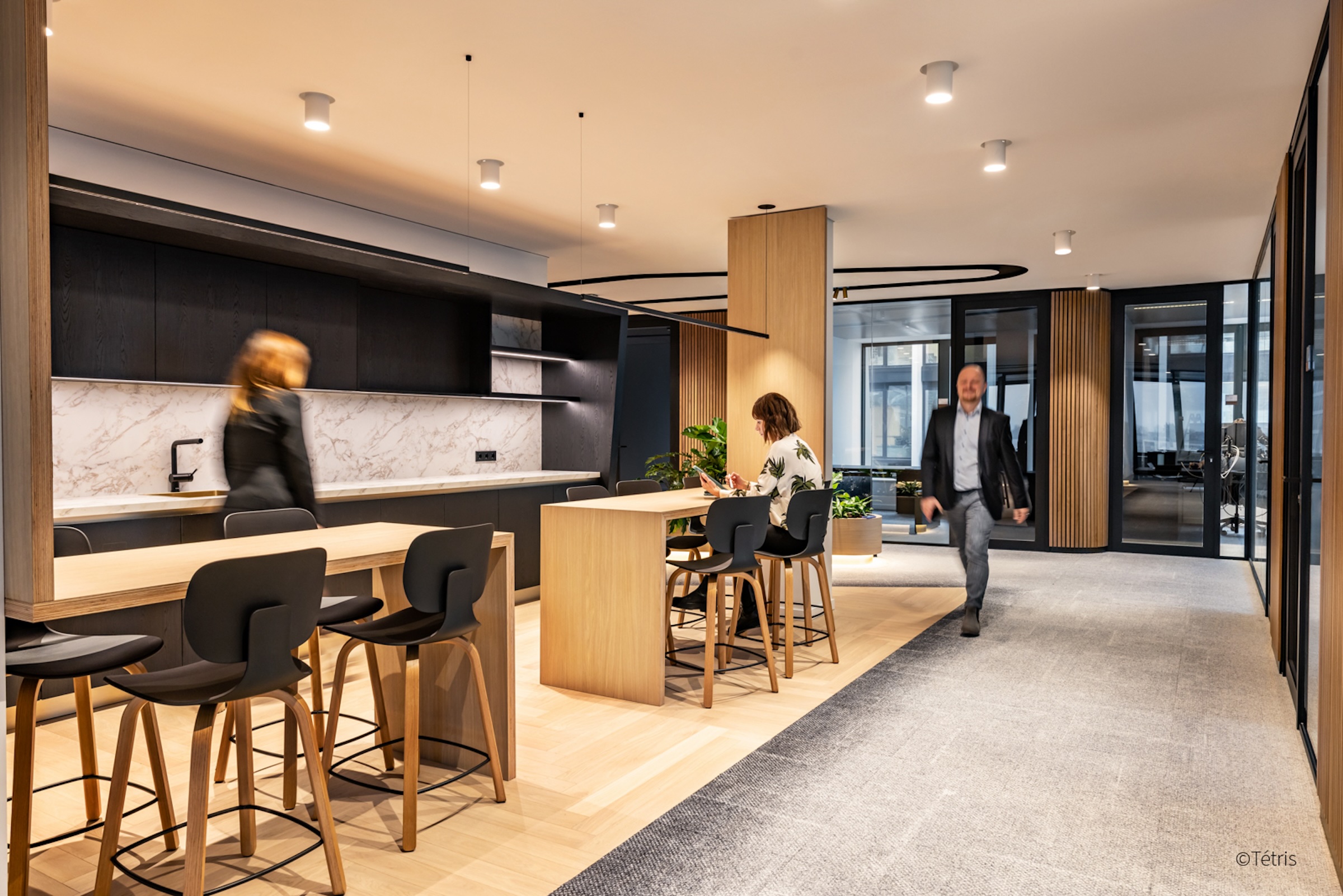As companies rethink what they want from the post-lockdown workplace, they’re taking a closer look at how they’re using space and asking ‘how can it better meet our needs?’
With physical distancing measures and a focus on improving the employee experience front of mind, Pivot Spaces – or multi-functional areas of the office – are a key feature of Tomorrow’s Workplace.
“Physical distancing is now central to office design,” says Robyn Bailey, head of design and business development at Tétris South Africa. “We know many people are keen to return after working remotely but companies also need to ensure their offices are safe as well as being attractive, collaborative and productive places to work.”
Indeed, JLL research shows that 58 percent of employees miss the office – a figure that’s even higher among millennials. For many, it’s down to human interaction as well as being in a professional work environment.
And this increasingly includes pivot spaces as more companies realise their benefits. “Done well, pivot spaces can help to make the office somewhere people really want to be, rather than just have to be,” says Bailey.
So, what makes for a successful Pivot Space?
1. Promoting health and safety
Employee health and wellbeing are at the heart of the re-imagined office. Pivot spaces can be used to spread staff around the office to maintain physical distancing and adapt accordingly as workplace guidelines change.
Well-designed pivot spaces can also help employees feel at ease in their surroundings. Plants and relaxed colour schemes can both have a calming effect. Right now, wipe-clean surfaces and materials can also reassure staff. For example, reconstituted stone (as opposed to porous, natural stones) is a high performance and low maintenance product. It is ideal for canteens as it is exceptionally easy to keep clean. In the case of work surfaces or meeting tables, medium-density fibreboard (MDF), an engineered product, is also less porous than natural timbers and easy to clean.
2. Creating a sense of community
Pivot spaces are popular places for internal team gatherings that allow colleagues to collaborate and strengthen working relationships.
“We’re more familiar with conference calls than ever before,” says says Nuno Fernandes, design director for Tétris EMEA. “But there’s no replacement for a physical gathering and those spontaneous ideas it generates.”
Ensuring design supports interaction does not mean “reinventing the wheel” and investing large amounts of capital in furniture, he adds.
Modular furniture, that can be moved and repurposed, is a good choice for both short-term social distancing and longer-term flexibility. High-back, single-seater pods provide comfort and privacy for calls or focus work while larger pods facilitate semi-private small group meetings.
Adjustable furniture such as standing desks also helps support a workforce with a range of needs and preferences.
3. Supporting client interactions
It’s not just about creating a pleasant working environment for staff; pivot spaces should be adaptable enough to support interaction with clients in digital presentations and face-to-face negotiations.
“Why should business meetings feel cold and formal? Post lockdown, clients visiting offices can be ushered into a small, sterile room – perhaps with intimidating Perspex screens in place,” says Fernandes. “Spaces should be inviting and appealing but still professional to create a positive experience.”
A library room, for example, could be used for financial auditing or important meetings as an alternative to large echoey boardrooms.
4. Strong connectivity
As offices get smarter, technology is getting more integrated across pivot spaces.
“We’ve grown accustomed to sitting in rows simply because of cabling and wiring,” says Fernandes. “But as we’ve all realised during remote working, tasks do not need to be carried out in one designated area for a set eight-hour period.”
Instead, wireless internet needs to be able to support everything from video calls to large file transfers, without any office blind spots, with plenty of charging points for electronic devices – even built into furniture.
5. Reflecting a brand
Pivot spaces offer an opportunity to enhance company culture and reflect its values, says Bailey.
“The benefits are two-fold,” she explains. “Visitors get a better feel for a company’s vision and brand when they see an open, collaborative workplace, while the right working environment can help employees feel part of something.”
Attracting and retaining talent, particularly in competitive sectors, is also a factor. “Young professionals have come to expect and care so much more about the workplace,” says Bailey. “Now, it can sway a decision, for example, on which banking or auditing firm to join after university.”

Want to find out more about pivot spaces and how they could work for your business?
Discover our solutions in our Designing Tomorrow’s Workplace guide.



